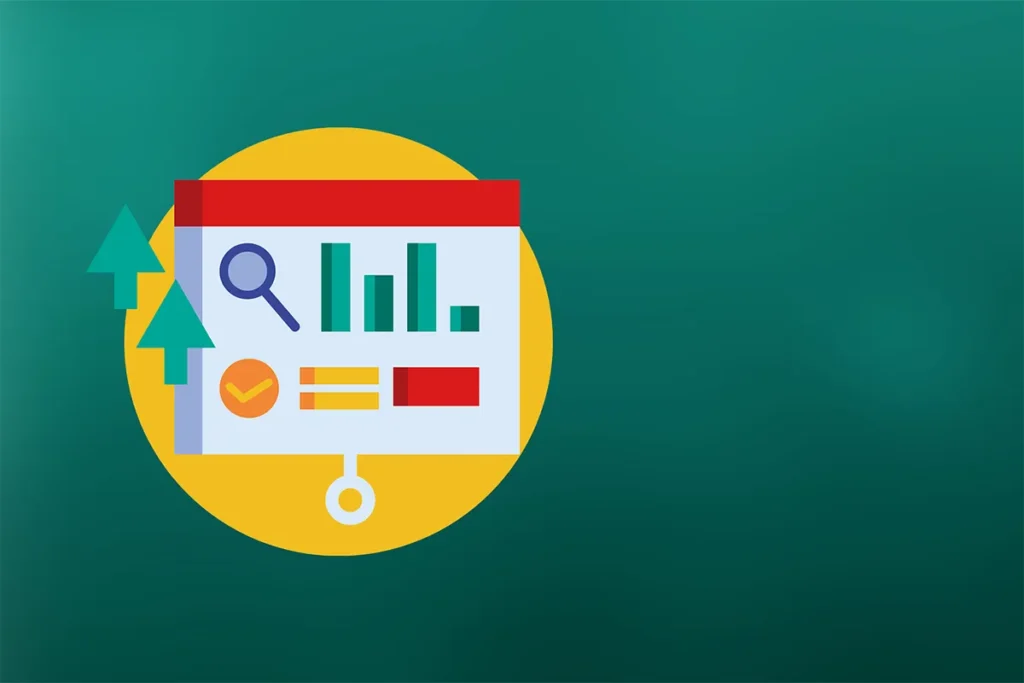Technology is evolving at a rapid speed. We see emerging trends and new innovations every day. In this evolution, Generative Engine Optimization (GEO) has come to the front as a new approach that is creative, smarter, and efficient in solving complex problems, as well as creating innovative solutions. GEO is the right tool that combines creativity with Artificial Intelligence (AI). It helps businesses come up with refined solutions, create new content, and optimize ad campaigns in the marketing sector.
The basic aim of GEO is to provide innovative ideas that are applicable to AI and its applications. This optimizes the use of AI by addressing new challenges and implications. Explores new avenues to speed up the growth and smoothly solve the difficult questions posed by emerging AI technologies. Resultantly, it raises growth and productivity, saves time, and cuts the cost of doing business.
What is Generative Technologies?
Generative technologies have changed many fields. They allow people to create new content, designs, and solutions. This happens through advanced algorithms and machine learning models. These technologies look at existing data. They then produce new and unique results. This helps industries become more innovative and efficient.
This technology uses many different methods. These methods can create new content or solutions. They learn from patterns in existing data. The technologies use algorithms and models to make outputs. These outputs can be text, images, designs, or music. Sometimes, they show creativity that is similar to human ability. This way of working is different from traditional systems. Traditional systems need detailed programming for every result. Here are some examples of generative technologies:
- Generative Design: Generative design uses algorithms to check many design options. It does this based on set goals and limits. It is often used in areas like architecture and engineering. This method makes it quick to create improved structures or products. It looks at many options to find the best solutions.
- Generative AI: Generative AI is a type of artificial intelligence. These systems can create new content like text, images, and music. They learn from existing datasets. Models like GPT-4 and DALL-E show this technology. GPT-4 can create text that sounds human. DALL-E creates realistic images from text descriptions.
- Generative Art: Generative art is art made by systems. These systems work alone, often using algorithms. The algorithms may add random elements or follow certain rules. Artists and programmers work together to make these systems. This leads to unique art pieces. These pieces can be digital paintings or interactive displays.
Machine learning is very important for generative processes. It helps systems learn from data. Then, they can create similar new outputs. Generative models like Generative Adversarial Networks (GANs) and Variational Autoencoders (VAEs) use large datasets. They understand patterns in this data. This lets them create new content that looks like the original data.

The Concept of Optimization
Optimization is a basic idea in solving problems and making decisions. It aims to get the best results under certain limits. It includes choosing the best solutions by looking at different options. It also tries to increase efficiency and decrease waste. Many fields use this idea to improve productivity.
The process of optimization means improving a system or a decision to get the best results. It often uses math or computer techniques to find the best solution from possible choices. This method can solve many problems. These problems can include making more money or using fewer resources.
Traditional optimization methods are based on math and problem-solving ways. They include linear programming, gradient descent, and heuristic methods. Linear programming helps with managing resources well. Gradient descent is often used in machine learning to reduce errors in predictions. Heuristic methods give helpful solutions for complicated problems when exact answers are not possible. Optimization is very important in many areas.
- Marketing: In marketing, optimization tries to increase the effect of ads while lowering costs. Techniques like A/B testing, audience segmentation, and algorithmic ad placement help companies reach the right people. This helps use resources well to get better sales and profits.
- Manufacturing: In manufacturing, optimization improves productivity by making operations better and reducing waste. Techniques like just-in-time production and supply chain optimization make sure resources are used wisely. This lowers costs and increases overall output and competitiveness.
- Software Development: In software development, optimization aims to make code work better and faster. Techniques like algorithm optimization, memory management, and code refactoring help developers build strong applications. These practices make sure that software works well and uses fewer computer resources.
Optimization is a key tool for gaining efficiency and quality in many fields. People and organizations use optimization techniques to make decisions. These decisions often lead to better results and success in the long term.
The interplay between Generative Technologies and Optimization
Generative technologies and optimization work together in a strong way. They help drive new ideas and efficiency in different industries. By mixing the creative side of generative technologies with the planning of optimization, companies can find new chances to grow and solve problems.
This technology helps optimization by finding many options quickly. They make decision-making faster and better. These technologies use algorithms to look at the limits and goals. They create solutions that regular methods might miss. This way, it saves time and effort and improves results in areas such as design and logistics. There are many benefits of putting GEO in current processes.
1. Increased Efficiency
GEO makes workflows easier. It reduces human work and lowers mistakes. This helps operations run smoothly and solves problems faster.
2. Enhanced Creativity
Generative technologies bring new ideas. They push the limits of creativity. Optimization makes sure these ideas can work and fit with specific goals. This helps industries like architecture and product development innovate.
3. Cost-Effectiveness
GEO saves money. By making and improving solutions at the same time, it reduces waste. This means companies spend less on trying things that do not work.
4. Scalability
This can grow easily. It helps businesses change and expand their work without problems. When the need arises, these systems can manage more complexity and keep performance high.
5. Better Decision-Making
GEO helps organizations make better decisions. It provides insights based on data and solutions that are improved. This lowers uncertainty. Leaders can choose strategies that have good results with confidence.
6. Faster Time-to-Market
GEO speeds up product development and delivery. It does this by automating creative processes and optimization. Businesses can react fast to what the market needs. They can keep an advantage over competitors in fast-moving industries.
7. Customization and Personalization
GEO helps create solutions that fit specific user needs. This is useful in areas like marketing and product design. Personalized experiences make customers happy.
8. Environmental Sustainability
GEO can use resources better. It can lower waste and encourage eco-friendly practices. When companies use less energy and materials, they can reach sustainability goals and still make money.
The mix of generative technologies and optimization offers a chance to change. Success needs careful planning and execution. When businesses deal with challenges early, they can use GEO’s full potential to reach their goals.

Applications of Generative Engine Optimization
Generative Engine Optimization is changing many industries. It combines generative technologies with optimization methods. This makes processes smoother, boosts creativity, and improves efficiency. It has uses in marketing, manufacturing, and software development. It offers new solutions for difficult problems.
1. Automated Ad Generation
GEO helps create advertisements that are tailored to specific audiences. It looks at audience data and makes targeted ad content. This automation saves time and money for ad creation. It also makes sure the message connects with the right people, which increases engagement and conversion rates.
2. Personalized Content Strategies
GEO helps marketers create personalized content strategies. It bases these strategies on what users like and do. This helps to show relevant content to audiences. It improves customer experiences and builds brand loyalty. The mix of creative ideas and optimization makes sure the content reaches people well.
3. Improving Materials and Designs
GEO helps in product development. It creates new designs and improves how materials are used. This way, products will cost less, work well, and last a long time. Fields like cars and planes gain a lot from these improvements.
4. Less Waste in Making Products
GEO joins with manufacturing processes. It helps companies use less material and energy. Generative models give ideas for better production ways. Optimization makes sure resources support sustainability goals. This leads to lower costs and less harm to the environment.
5. Improving Algorithms
GEO helps with software development. It makes algorithms better to increase performance and efficiency. This process helps developers make software that needs fewer computer resources. The result is faster and more reliable applications.
6. Automated Testing
GEO helps automate the making of test cases in software testing. It finds possible problems early in development. This cuts down time for manual testing. It also speeds up deployment and helps software stay stable and of good quality.
Many uses of GEO show it can change industries. It can make things more efficient, lower costs, and support new ideas. As companies use GEO more, they find new ways to grow and succeed.
Problems and Points to Think About for GEO
GEO has great potential but also brings challenges. It is important to solve these challenges for successful use. This makes sure GEO meets technical, ethical, and creative needs.
- Technical Problems: Using GEO requires good technology and know-how. This can make it hard for small organizations to access. It also needs a lot of computer power and good data, which makes things more difficult. Combining new systems with old ones needs smooth processes. To solve these issues, companies must invest in tech, training, and solutions that can grow to support good implementation.
- Intellectual Property Problems: Generative technologies use past data. This raises worries about breaking intellectual property (IP) rules. Ownership of generated outputs can be unclear. This is especially true when the outputs are based on copyrighted materials. Clear policies on data usage are important. These policies help protect creators’ rights. They also help maintain accountability.
- Potential Biases in Generated Outputs: Potential biases in generated outputs can happen. Bias can come from incomplete training data. This can lead to unfair outputs. Generative models may unintentionally reinforce stereotypes. They may also exclude certain groups. Regular audits are important. Diverse datasets help reduce bias. Strategies for bias mitigation are crucial, too. This ensures ethical and fair results.
- Creating a balance: Creating a balance is necessary. Balancing human creativity with machine-generated content is important. This way, GEO supports innovation. It does not replace originality. GEO can automate tasks and generate ideas. However, over-reliance can stifle human input. Defining roles for both humans and machines is helpful. This ensures collaboration and keeps the value of human creativity.
Addressing these challenges takes a thoughtful approach. This approach needs technical expertise and ethical vigilance. Collaborative efforts are also needed. By doing this, organizations can use GEO responsibly. They can harness its full potential while navigating its complexities.
The Future of Generative Engine Optimization
The future of Generative Engine Optimization is bright. Generative technologies are changing quickly. There are advancements in algorithms. Increased accessibility is driving new possibilities. Key trends include the rise of generative AI models. Models like GPT and DALL-E are becoming more versatile. They are also integrated into many applications. Generative design tools are being adopted more in engineering and architecture. These tools enable rapid exploration of new solutions. These technologies use larger datasets, too. They use sophisticated machine-learning techniques to create refined outputs.
The future of GEO is about combining creativity with efficiency. As generative technologies get better, GEO systems can become more autonomous. They will likely deliver optimized solutions with less human help. Advances in explainable AI will make GEO more clear. This can enhance trust and usability in different industries. The integration of GEO with real-time data will help businesses optimize their operations. This will allow businesses to respond to changing conditions and demands. GEO will have a big impact on many industries. It will drive innovation and change traditional workflows.
In healthcare, GEO will help create better treatment plans and find new drugs. This will improve patient outcomes. In manufacturing, it will make production processes smarter and improve resource management. The creative sectors like advertising and entertainment will gain from better content creation and personalization. GEO will streamline operations in all industries. Its ability to foster innovation will set new standards for efficiency and productivity.
Conclusion
Generative Engine Optimization is an important approach. It combines generative technologies with optimization techniques. This approach will change how people solve problems and create new ideas. It can create efficient designs and generate personalized content. It can also improve workflows. Because of this, it is an important tool for many industries. In marketing, manufacturing, and software development, GEO streamlines processes, reduces costs and encourages creativity. This shows how useful and effective GEO is in solving complex problems.
However, GEO also brings up important issues. These issues include data biases, intellectual property concerns, and the balance between automation and human creativity. By facing these challenges carefully, GEO can be used in the right way. This will help it meet ethical standards and business goals. In the end, GEO is a strong solution for businesses. It helps them combine efficiency and innovation with precision and responsibility.
